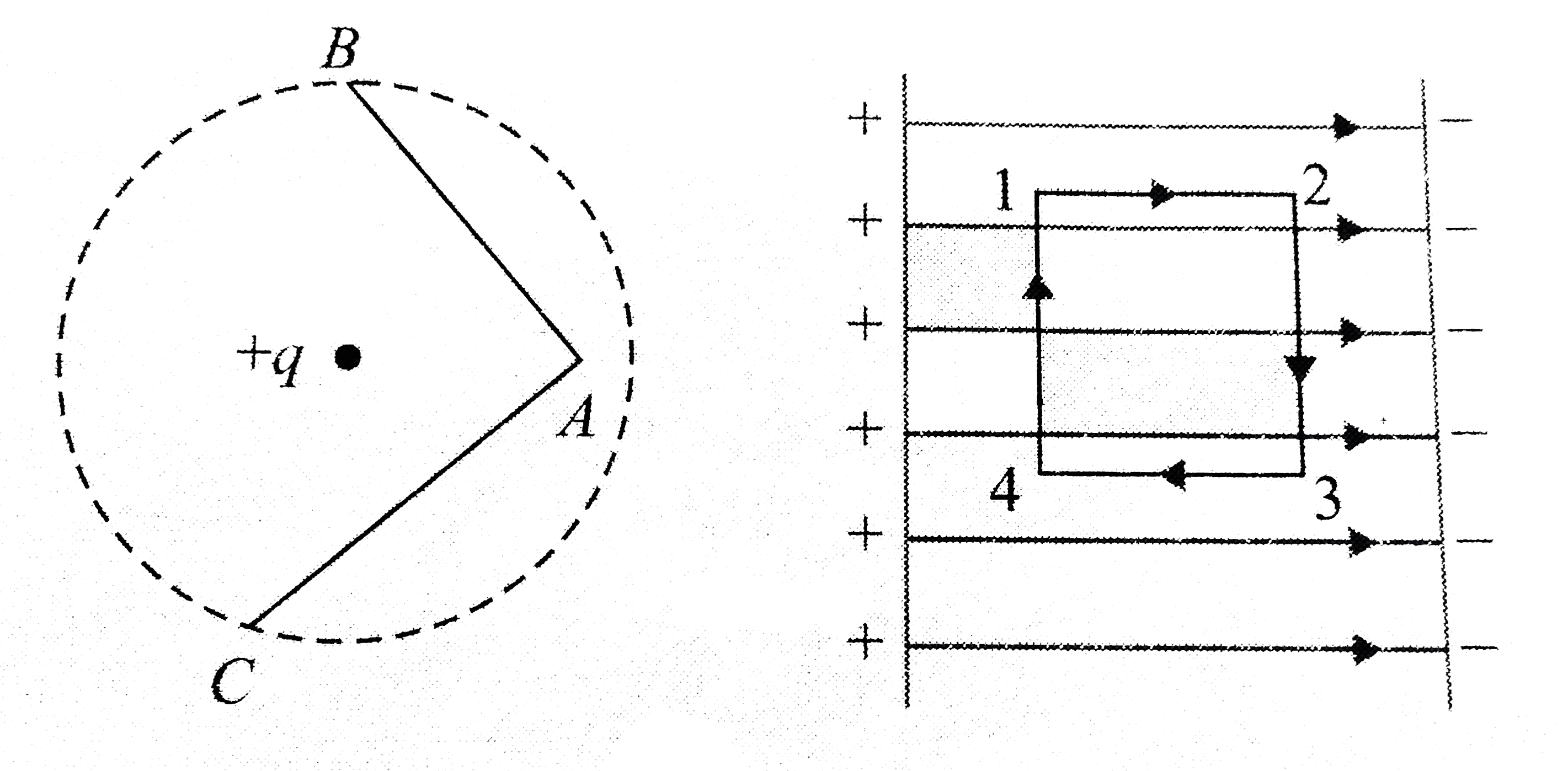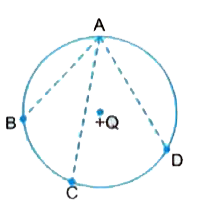A charge Q is placed at the centre of a circle of radius R. The work done in moving a charge q from A to B so as to complete a semi-circle is

zero
Qq4π∈0R
Qq2π∈0R
Qq2π∈0R
The correct Answer is:A
W=qΔV
Topper's Solved these Questions
- BOOK - NARAYNACHAPTER - ELECTROSTATIC POTENTIAL AND CAPACITANCEEXERCISE - EXERCISE -2 (H.W)50videos
ELECTROSTATIC POTENTIAL AND CAPACITANCE
- BOOK - NARAYNACHAPTER - ELECTROSTATIC POTENTIAL AND CAPACITANCEEXERCISE - EXERCISE - 3 (PREVIOUS AIPMT QUESTIONS)23videos
ELECTROSTATIC POTENTIAL AND CAPACITANCE
- BOOK - NARAYNACHAPTER - ELECTROSTATIC POTENTIAL AND CAPACITANCEEXERCISE - Exercise -1 (H.W)43videos
ELECTROSTATIC POTENTIAL AND CAPACITANCE
- BOOK - NARAYNACHAPTER - ELECTROMAGNETIC WAVES EXERCISE - EXERCISE -415videos
ELECTROMAGNETIC WAVES
- BOOK - NARAYNACHAPTER - ELECTROSTATICS AND GAUSS LAWEXERCISE - Intergers type question11videos
ELECTROSTATICS AND GAUSS LAW
Similar Questions
A charge +Q is lying at the center of a circle. What is work done in carrying charge q from A to B, where A and B, both lie on the circle.
View Solutiona. A circle is drawn with center as a charge +q. What is the work done in moving a charge +q from B to C along the circumferebce of the circle ?
B In the above question, if the charge +q is first taken from B to A and then from A to C, on which path is the magnitude of work greater?
 View Solution
View Solution
Knowledge Check
- Question 1 - Select One
There is 10 units of charge at the centre of a circle of radius 10m. The work done in moving 1 unit of charge around the circle once is
AzeroB10 unitsC100 unitsD1 unit - Question 2 - Select One
Four equal charges Q are placed at the four corners of a square of each side is 'a'. Work done in removing a charge −Q from its centre to infinity is
AzeroB√2q2πε0aC√2qπε0aDq2πε0a - Question 3 - Select One
Four equal charges Q are placed at the four corners of a square of each side is 'a'. Work done in removing a charge −Q from its centre to infinity is
A0B√2Q24πε0aC√2Q2πε0aDQ22πε0a
a. A circle is drawn with center as a charge +q. What is the work done in moving a charge +q from B to C along the circumferebce of the circle ?
B In the above question, if the charge +q is first taken from B to A and then from A to C, on which path is the magnitude of work greater ?
 .View Solution
.View SolutionThree equal point charges of charge +q each are moving along a circle of radius R and a point charge -2q is also placed at the centre of circle (as shown in figure). If charge are revolving with constant and same speed in the circle then calculate speed of charges
 View Solution
View SolutionThree equal point charges of charge +q each are moving along a circle of radius R and a point charge -2q is also placed at the centre of circle (as shown in figure). If charge are revolving with constant and same speed in the circle then calculate speed of charges
 View Solution
View SolutionFour equal charges Q are placed at the four corners of a square of each side is 'a'. Work done in removing a charge −Q from its centre to infinity is
View SolutionIn the electric field of a point charge Q placed at the centre of a circle, as shown in fingure, a certain test charge q0 is carried from point A to B, C B and D. Then the work done
 View Solution
View Solution

